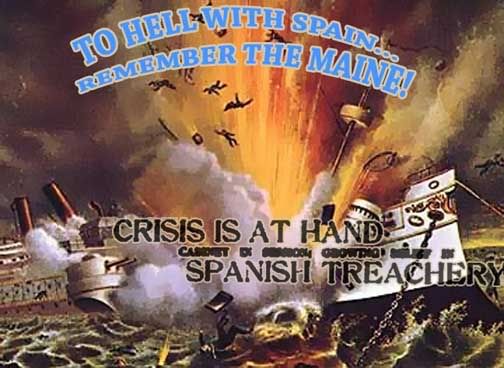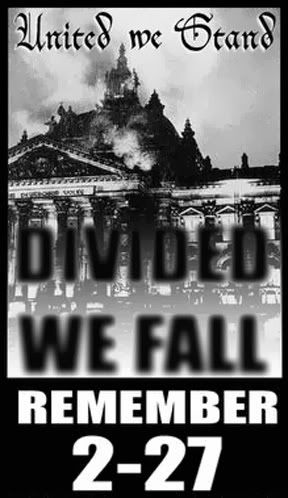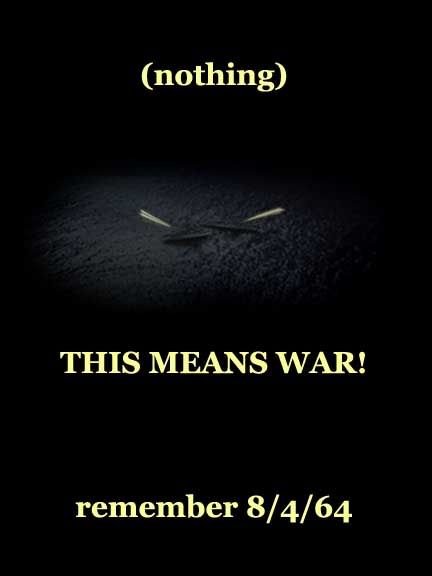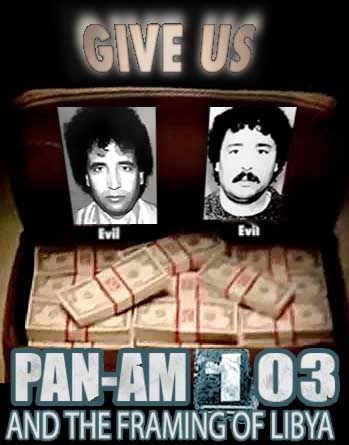The origin of the name “Northwoods” is not clear, but is possibly a reference to the London suburb of Northwood, home of the Permanent Joint Headquarters (PJHQ), the British equivalent of the JCS, possibly indicating a British connection or inspiration. In March 1962, Operation Northwoods was completed, and Lemnitzer signed off on it. The “special distribution” document opened:
”As requested by Chief of Operations, Cuba project, the Joint Chiefs of Staff are to indicate brief but precise description of pretexts which they consider would provide justification for US military intervention in Cuba.” [4]

Wikipedia article on Northwoods
Destabilizing or toppling Castro’s regime and the re-subduction of Cuba was still American policy in general, and Northwoods itself was part of a larger, Kennedy-supported “Cuba Project.” But this report went beyond the pale, promoting harassment and a threatening posture to elicit an attack “since,” the memo states, “it would seem desirable to use legitimate provocation as the basis for US military intervention.” [5] But of course Cuba was not Japan, and Castro was not Tojo, and so the report focused more on the backup plans. These were more cynical than anything FDR or Arthur McCollum, the author of his Japan provocation policy, would have dreamed up - if Cuba failed to be provoked into a “mistake,” the JCS proposed providing a pretext themselves in a false flag operation and blaming Cuba for it.
They suggested what they candidly described as a “remember the Maine” incident, the sinking of a U.S. ship in Guantanamo Bay to be blamed on Castro. Mock attacks on U.S. bases by friendly Cubans dressed as Castro forces, the planting of “plastic bombs” in Miami, Washington, and elsewhere, and even the sinking of a boatload of Cuban refugees (“real or simulated”) were mentioned. In fact, a little death would be useful - the report noted that “casualty lists in U.S. newspapers would cause a helpful wave of national indignation.” [6] While they never planned to shoot him down themselves, Northwoods did suggest that, should John Glenn’s space capsule accidentally crash as he attempted the first American orbit of the earth, this could be blamed on Cuba as well. [7]
In all, Northwoods offered dozens of variations on the theme, but the ones regarding aircraft bear a look here. For what it’s worth, all these are neatly contained in pages nine to eleven (that is, 9-11). These received extra attention perhaps because they did not involve deaths at all, simply high-tech aerial acrobats and cynical trickery. Point six, for example, mentions use of “an F-86, properly painted” to simulate a Cuban MIG (Soviet-made) fighter jet, and that “reasonable copies of the MIG could be produced from US resources in about three months.” It mentioned that the “destruction of U.S. military drone aircraft” by these MIG replicas could look convincingly like a Cuban attack. Keep in mind that drone means remote-controlled and pilotless.
Point eight is especially interesting and elaborate. Here is an extended citation (emphasis mine throughout):
“It is possible to create an incident which will demonstrate convincingly that a Cuban aircraft has attacked and shot down a chartered civil airliner en route from the United States to Jamaica, Guatemala, Panama, or Venezuela. The destination would be chosen only to cause the flight plan route to cross Cuba. The passengers could be a group of college students off on a holiday or any grouping of persons with a common interest to support chartering a non-scheduled flight.
a. An aircraft at Elgin AFB would be painted and numbered as an exact duplicate for a civil registered aircraft belonging to a CIA proprietary organization in the Miami area. At a designated time the duplicate would be substituted for the actual civil aircraft and would be loaded with the selected passengers, all boarded under carefully prepared aliases. The actual registered aircraft would then be converted to a drone.
b. Take off times of the drone aircraft and the actual aircraft will be scheduled to allow a rendezvous south of Florida. From the rendezvous point the passenger carrying aircraft will descend to minimum altitude and go directly into an auxiliary field at Elgin AFB where arrangements will have been made to evacuate the passengers and return the aircraft to its original status. The drone aircraft meanwhile will continue to fly the filed flight plan. When over Cuba, the drone will begin transmitting the international distress frequency a “MAY DAY” message stating he is under attack by Cuban MIG aircraft. The transmission will be interrupted by destruction of the aircraft which will be triggered by radio signal. This will allow ICAO radio stations in the Western Hemisphere to tell the US what has happened to the aircraft instead of the US trying to “sell” the incident.”
Points seven and nine also deal with such aircraft-related deceit. These three pages contain several elements of “silly” 9-11 conspiracy theories, even some of the ones I don’t necessarily buy:
- Destruction of remote control drone jets
- Aircraft “rendezvous,” crossing paths to confuse radar and swap drones for manned flights
- Aliases, false paint jobs, and CIA “proprietary companies” to allow pilots, passengers and planes to “disappear”
- Training missions as cover
- Planted evidence of a nonexistent attack
- Manipulated flight data and radio transmissions
- Remote controlled explosives
All of these were presented as real possibilities in a real and proven JCS-sponsored conspiracy. No theory here. The plan suggested the provocations occur “within the time frame of the next few months” and closed with the recommendation that the entire deal be carried out by the Joint Chiefs themselves. [8] After reviewing the memo, Lemnitzer signed it and pitched it to Kennedy’s military representative, General Maxwell Taylor, on March 13, 1962. What exactly happened during the meeting is unknown, but it only took three days for President Kennedy to inform Lemnitzer that the game was over; there was no longer a possibility of overt U.S. force against Cuba. Still the Joint Chiefs persisted, insisting to Defense Secretary McNamara that the war needed to begin soon. McNamara responded by rejecting nearly everything they sent his way. [9]
Within months, Lemnitzer would be denied another term as chairman and transferred to another job. This was not much of a demotion – he was named Commander of U.S. forces in Europe in November 1962 and was appointed Supreme Allied Commander of NATO the following January. [10] He retired from the military in 1969, and in 1975 was selected by President Ford to serve on the Rockefeller Commission, looking into Rockefeller-connected, illegal CIA projects (like the MK Ultra mind control experiments) overseen by his old partner Allen Dulles at the CIA. [11]
But as for Lemnitzer’s own illegal activities - was Northwoods a unique example, or are such “special distribution” recommendations actually common? The report noted on page four “it is assumed that there will be similar submissions from other agencies and that these inputs will be used as a basis for developing a time-phased plan.” [12] It appears that even as far as this “Cuba Project” was concerned, Northwoods was not alone, and they probably knew this from previous experience - its uniqueness therefore may lie not its existence but in its eventual publication.
In fact Bamford notes Northwoods as a precedent for events to come. On the subject of the Gulf of Tonkin incident, the August 1964 alleged attack by North Vietnamese forces on American ships that led to direct U.S. involvement in the Vietnam War, he wrote:
“In light of the Operation Northwoods documents, it is clear that deceiving the public and trumping up wars for Americans to fight and die in was standard, approved policy at the highest levels of the Pentagon. […] One needs only replace “Guanantanamo Bay” with “Tonkin Gulf,” and “Cuba” with “North Vietnam.” The Gulf of Tonkin incident may or may not have been stage-managed, but the senior Pentagon leadership at the time was clearly capable of such deceit.” [13]
Bamford described Northwoods as “what may be the most corrupt plan ever created by the U.S. government.” [14] But that’s not to stay it didn’t have stiff competition, nor that other nations at other times have not trumped the JCS, nor that the U.S. itself hasn’t trumped this in the period after the book’s release. To act like Lemnitzer and his people invented such cynical thinking is disingenuous – such deceit is standard operating procedure for politicians and leaders worldwide and throughout history. But this report shatters the belief that America is somehow different, protected by a bubble of Democracy.













1 comment:
Nice piece.
Post a Comment